Humans have been keeping records for several millennia as evidenced by some of the oldest cave paintings in the world and other ancient artifacts. However, the first true writing systems emerged with the first modern civilizations over 5,000 years ago.
These early writing systems influenced later written scripts. Some modern written languages can even trace their roots all the way back to these early texts.
Most of the written languages on this list have been deciphered, while others are still largely a mystery.
Please note that we chose to exclude any proto-writing systems or supposed writing systems that have been called into question and may not even be true written languages, like the Indus script or the Vinča symbols.
While these symbols date to much earlier than the written languages on this list, no one knows for sure if these actually represented any form of structural writing, so they have been omitted.
10. Oracle Bone Script
Year Created or Date of Earliest Known Text: c.1250 (but most likely much earlier)
Used By (Languages): Archaic Chinese
Time Period: Bronze Age China
Type: Logographic
Direction: Top to bottom
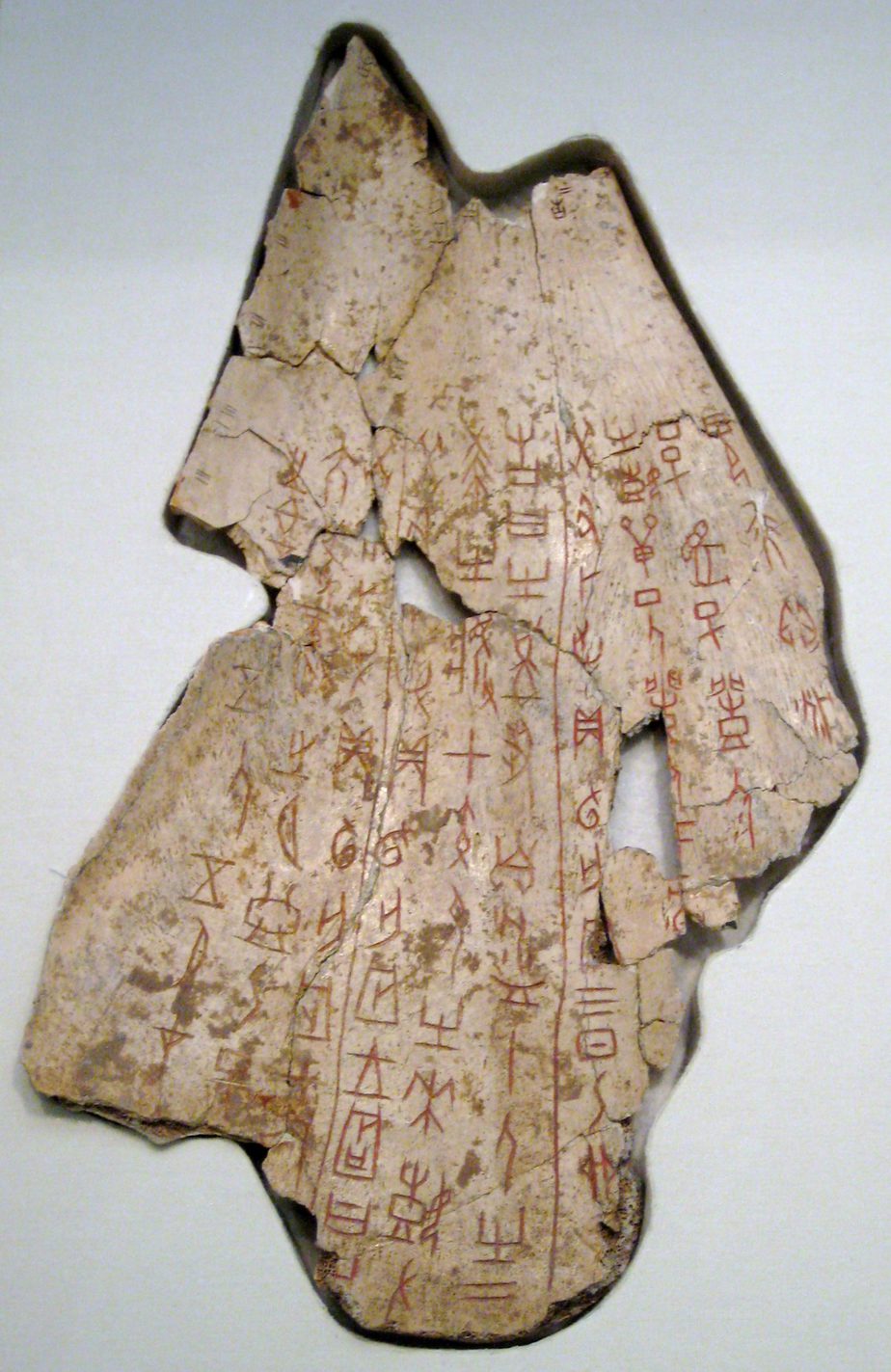
As its name suggests, oracle bone script is found on oracle bones (animal bones or turtle plastrons used in divination). Most of the known examples of oracle bone script were discovered at the Yinxu archaeological site (modern-day Anyang, Henan Province).
The texts are pyromantic divinations from the last nine kings of the Shang Dynasty. By around the 1st millennium BCE, oracle bone script became less common.
Did You Know?
While oracle bone script is the earliest known form of Chinese writing, historians believe that there was a writing system before oracle bone script because its a well-developed system. However, no texts from before the Shang Dynasty have been found.
9. Luwian Hieroglyphs
Year Created or Date of Earliest Known Text: c.1400 BCE
Used By (Languages): Luwian
Time Period: c.1400 BCE to 700 BCE
Type: Logographic
Direction: Variable
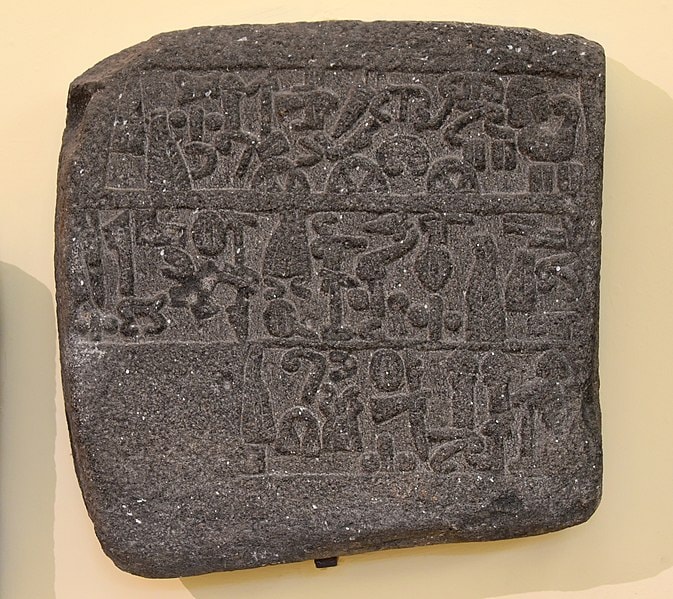
Luwian hieroglyphs were used in Bronze Age Anatolia (modern-day Turkey) and was related to the Hittite language and script. While Hittite was based on Akkadian cuneiform, Luwian was an indigenous writing system developed for the Luwian language.
When it was first discovered, Hieroglyphic Luwian was called Hieroglyphic Hittite because the first tablets were found in the archives of the Hittitle capital of Hattusa (modern Boğazköy).
After the tablets were deciphered, it was determined that the script represented Luwian and not Hittite.
The Luwians were part of a separate kingdom that neighbored the Hittite Empire. The Hittites used both their own cuneiform as well as the Luwian hieroglyphs.
Did You Know?
After the fall of the Hittite Empire, no evidence of Luwian existed for two hundred years, but Luwian hieroglyphs were revived and used by the rulers of Neo-Hittite city-states in southern Anatolia and what is now northern Syria.
8. Linear B
Year Created or Date of Earliest Known Text: c.1500 BCE
Used By (Languages): Mycenaean Greeks
Time Period: c.1500 to 1200 BCE
Type: Syllabic
Direction: Variable
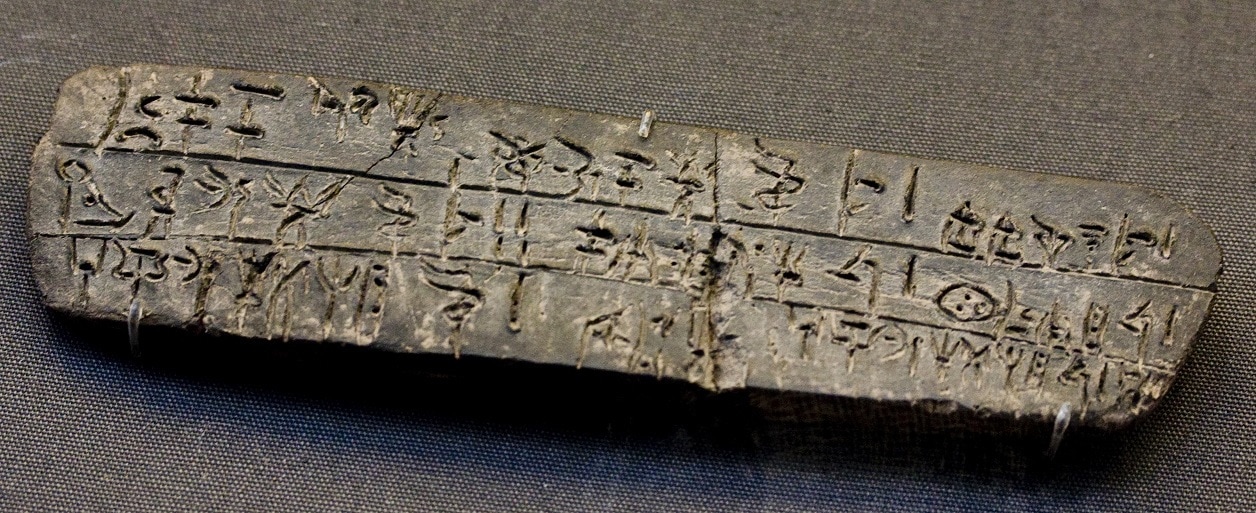
Linear B is one of the oldest surviving Greek writing systems and was used by the Mycenaean Greeks from 1500 to 1200 BCE. Although Linear B tablets were discovered in the early 20th century, the texts were not deciphered until the early 1950s.
Michael Ventris, an architect interested in linguistics, and John Chadwork discovered that Linear B represented an archaic Greek language.
Many common Greek sounds are missing from the Linear B, but modern scholars eventually worked out how the writing system worked by studying later Greek dialects. They discovered that instead of using different symbols for each sound, similar sounds were represented by one symbol.
Did You Know?
The known Linear B tablets are mostly just old accounting records of lists of materials and goods.
7. Hittite Cuneiform
Year Created or Date of Earliest Known Text: c.1700 BCE
Used By (Languages): Hittites
Time Period: c.1700 to 1100 BCE
Type: Logophoentic
Direction: Variable
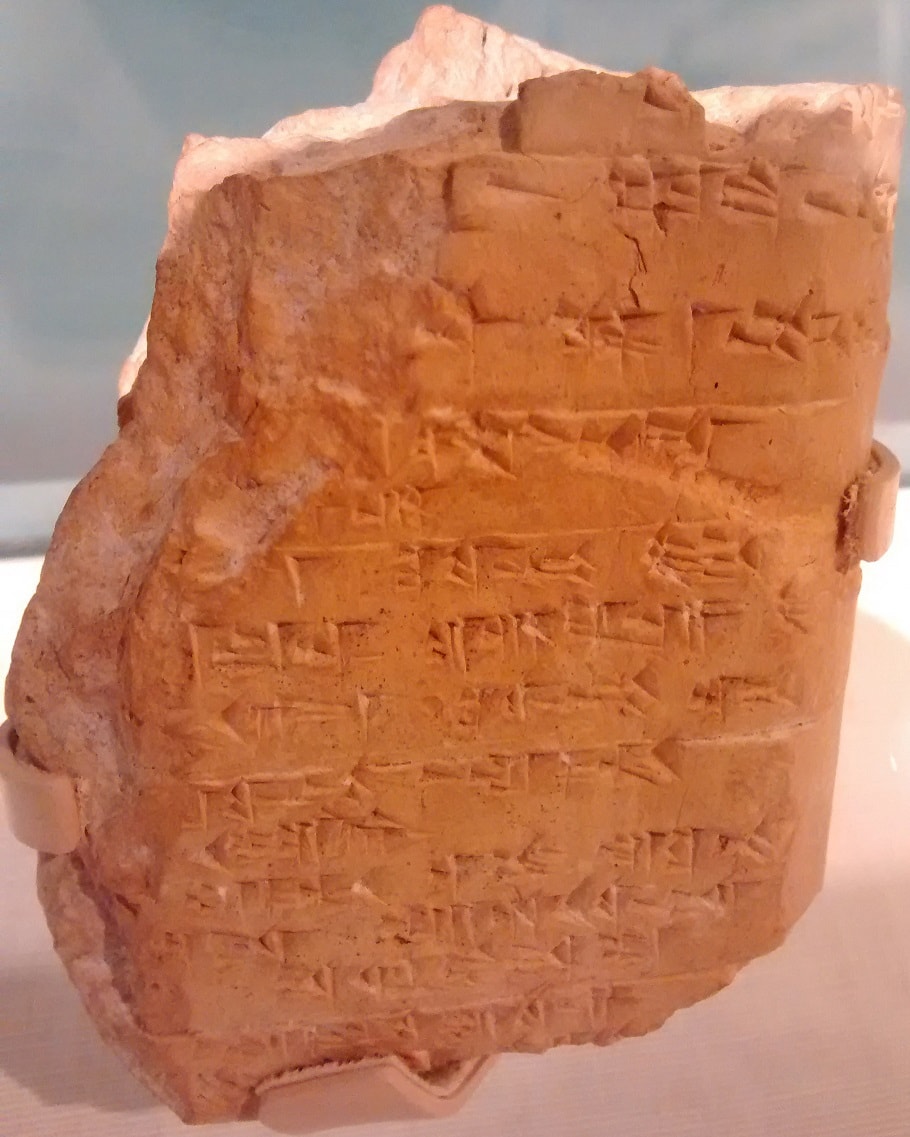
Hittite cuneiform was used by the Hittites who lived in ancient Anatolia (part of modern-day Turkey). Like several peoples before them, the Hittites adopted Akkadian cuneiform, who borrowed the cuneiform writing system from the Sumerians. The Hittites borrowed about 375 signs from Akkadian cuneiform.
The Hittite Empire lasted until the 12th century BCE and Hittite cuneiform went extinct when the empire did. The descendants of the Hittite aristocracy stopped using Hittite cuneiform, and used the related Luwian hieroglyphs instead.
Did You Know?
The study of Hittite cuneiform and the closely related Luwian language helped modern linguists understand Proto-Indo-European, the supposed mother tongue of all Indo-European languages.
6. Linear A
Year Created or Date of Earliest Known Text: c.1800 BCE
Used By (Languages): Minoans (people of Crete)
Time Period: c.1800 to 1400 BCE
Type: Undeciphered, believed to be ideographic and syllabic
Direction: Variable
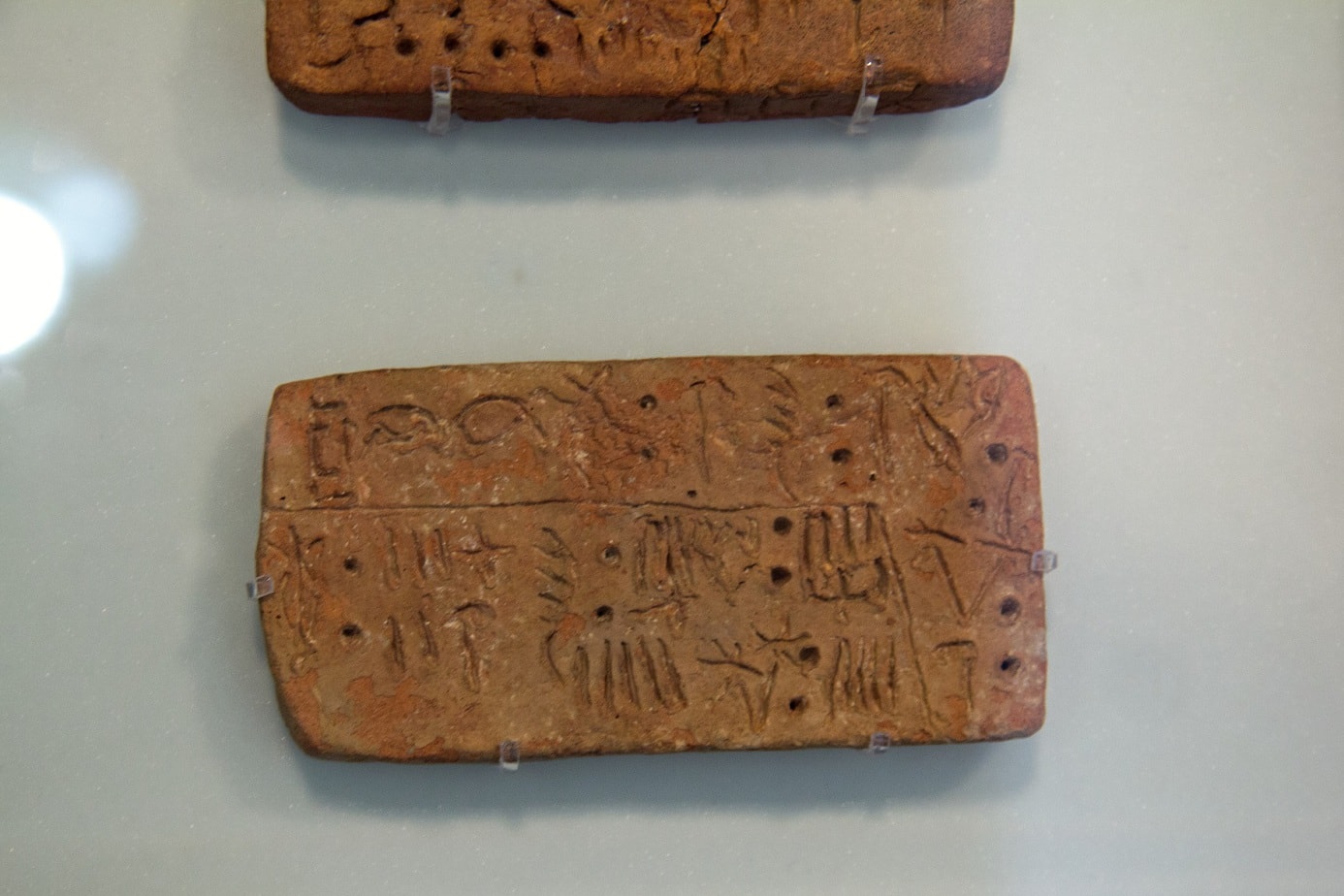
Linear A is one of two undeciphered writing systems used by the Minoans of Crete from 1800 to 1400 BCE. Along with Cretan hieroglyphs, Linear A is one of the first European writing systems.
Since not much is known about either Linear A or Cretan hieroglyphs, they could have been part of the same writing system even though the scripts look very different.
In addition to being possibly related to Cretan hieroglyphs, Linear A looks similar to Linear B, which was used by the Mycenaean Greeks. However, after comparing both languages, linguists concluded that Linear A does not represent a known Greek language.
Did You Know?
Linear A consists of about 90 different symbols.
5. Cretan Hieroglyphs
Year Created or Date of Earliest Known Text: c.2100
Used By (Languages): Minoans (people of Crete)
Time Period: c.2100 to 1700 BCE
Type: Undeciphered, believed to be ideographic with a syllabic component
Direction: Variable
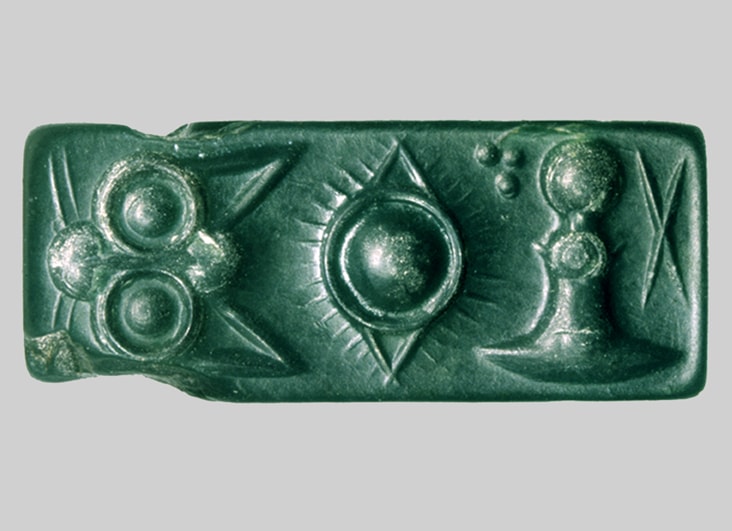
The reason Cretan hieroglyphs have not been translated is because the few known examples of the text are very short.
Cretan hieroglyphs most often appeared on clay seals, which most likely showed the names of the people who owned the objects that the seals are on.
Most of the known Cretan hieroglyphs appear to be pictographic and ornamental, but a few examples contain more linear text — this has only added to the difficulty of deciphering Cretan hieroglyphs.
Did You Know?
In addition to being undeciphered, it is not known what spoken language Cretan hieroglyphs represented.
4. Elamite Cuneiform
Year Created or Date of Earliest Known Text: c.2200 BCE
Used By (Languages): Elamites
Time Period: c.2200 BCE to 400 BCE
Type: Syllabary
Direction: Left to right
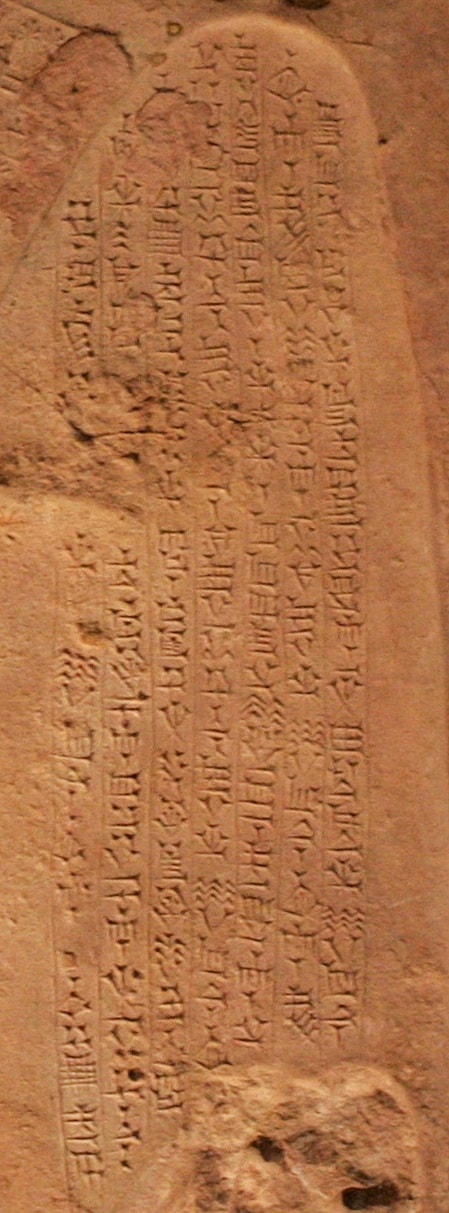
Elamite cuneiform was directly influenced by Akkadian cuneiform, but was not as complex and used less symbols. There are two variants of Elamaite cuneiform, the one derived from Akkadian, which was used from the 3rd to 2nd millennia BCE and the simplified form used in the 1st millennium BCE.
Both variations of Elamite cuneiform are similar, but the simplified form used fewer scripts. Compared to Akkadian cuneiform, which had hundreds of different symbols, Elamite cuneiform only had about 130 to 206 different signs.
The most famous Elamite tablets are from the Achaemenid Persian kings, which were from the late 1st millennium BCE and were written in three languages: Old Persian, Babylonian, and Elamite. These tablets were used to decipher Elamite cuneiform.
Did You Know?
There are about 20,000 known Elamite tablets and fragments and they are primarily economic records.
3. Akkadian Cuneiform
Year Created or Date of Earliest Known Text: c.2500 BCE
Used By (Languages): Akkadians
Time Period: c.2500 BCE to 100 CE
Type: Syllabic and logographic
Direction: Left to right
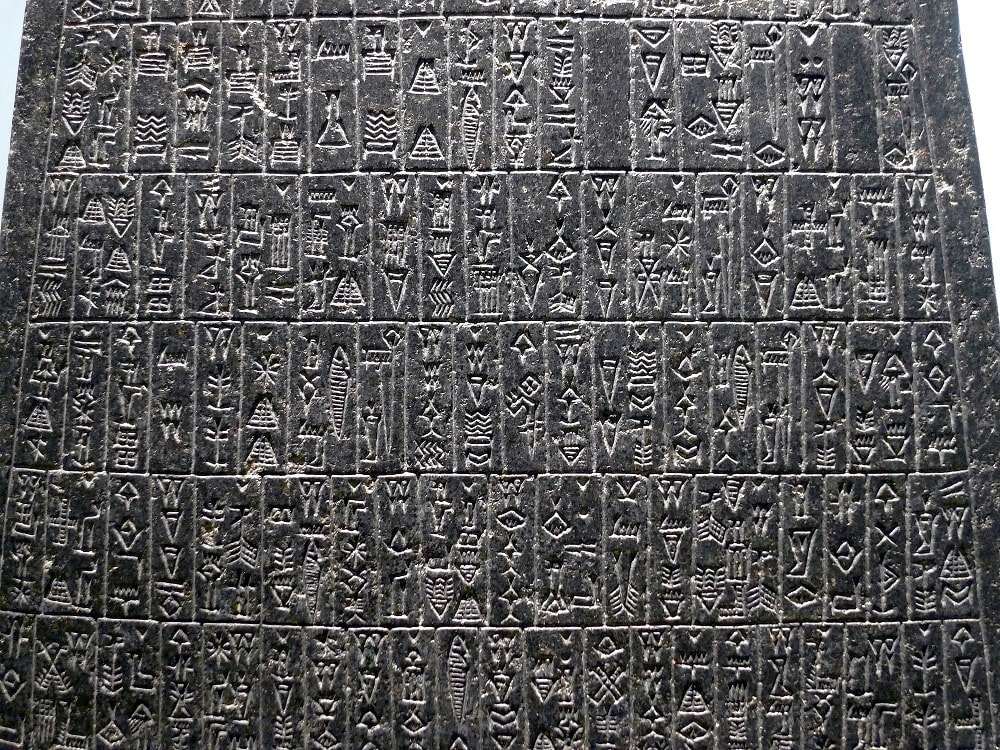
While Sumerian and Akkadian were two very different languages, the Akkadians, who lived north of the Sumerians, adopted the cuneiform writing system and eventually transformed it.
The Akkadians started using cuneiform around 2500 BCE and continued using the writing system for the next several centuries.
The Akkadians simplified the Sumerian cuneiform pictographs and tried their best to adapt cuneiform to their Semitic language. There are between 700 to 800 symbols in Akkadian cuneiform, but only about 200 to 400 were commonly used.
Did You Know?
Akkadian eventually became the dominant language in ancient Mesopotamia (starting around 2300 BCE) and later became the Babylonian and Assyrian languages.
2. Egyptian Hieroglyphs
Year Created or Date of Earliest Known Text: c.3200 BCE
Used By (Languages): Ancient Egyptians
Time Period: c.3200 BCE to 400 CE
Type: Syllabic and logography usable as an abjad
Direction: Left to right
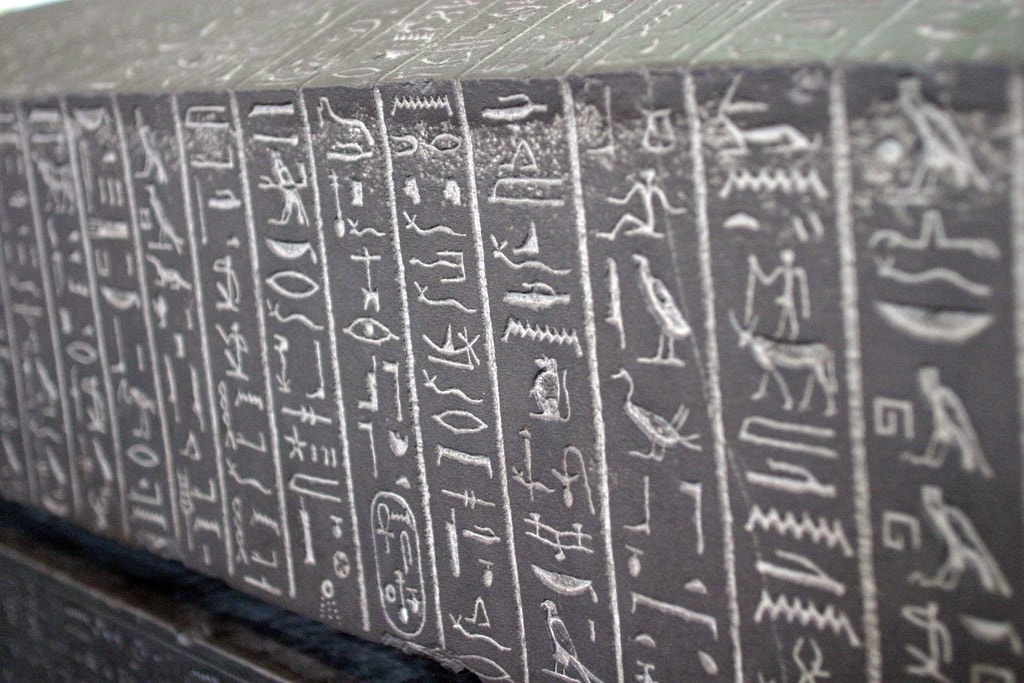
Of all the earliest writing systems, none are more popular or as elegant as Egyptian hieroglyphs. In fact, the Greeks thought the Egyptian symbols were so beautiful and sacred that they called them “holy writing” or hieroglyphs, from the Greek hiero ‘holy’ and glypho ‘writing.’
The Ancient Egyptians also believed that their writing were invented by the gods and called it medu netjer (‘the gods’ words’).
While no one knows for sure when the Egyptians first started using hieroglyphs, the oldest definitively dated example comes from around 3200 BCE. Like many ancient written languages, people forgot how to read hieroglyphs for several centuries after it fell out of use. (idigtexas.com)
Egyptian hieroglyphs were not translated until the 1820s by Jean-François Champollion, with the help of the famous Rosetta Stone.
Did You Know?
Although Egyptian hieroglyphs are pictures, each symbol actually represents a consonant, this is known as an abjad writing system.
1. Cuneiform
Year Created or Date of Earliest Known Text: c.3200 BCE
Used By (Languages): Sumerians and Akkadians
Time Period: c.31st century BCE to 1st century CE
Type: Logographic and syllabic
Direction: Left to right
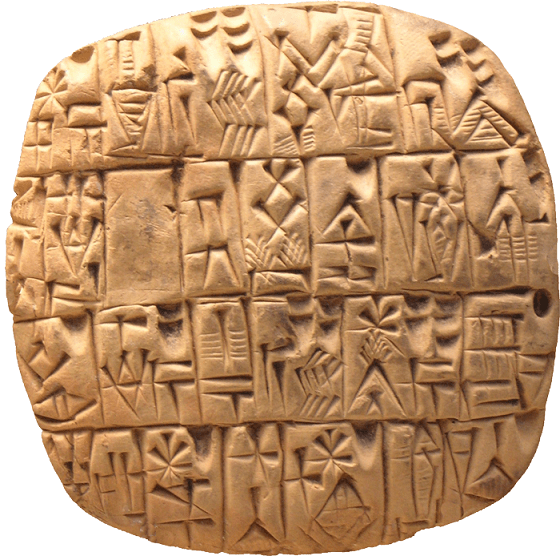
Use of Cuneiform lasted for over 3,000 years and inspired many early writing systems in other parts of Mesopotamia. Eventually, Cuneiform was replaced by the Phoenician alphabet and it went extinct around the 1st century CE.
For many centuries after this, no one knew how to read Cuneiform. The language was finally slowly pieced together by deciphering repetitive words (like “king”) in Persian during the 19th century.
Did You Know?
Thousands of Cuneiform tablets have been discovered and they contain some of the world’s oldest laws, recipes, and personal and business letters, including the oldest customer complaint.
”OTHER



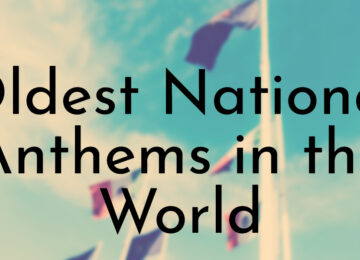


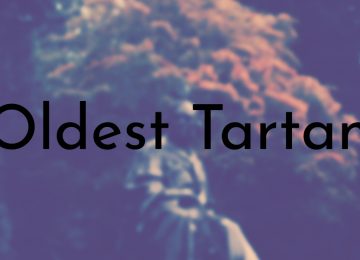





where does amharic of ethiopia feature on this list?
Tamil is not older then Sanskrit. Sanskrit is the oldest language on earth
Tamil language is a first oldest language in the world